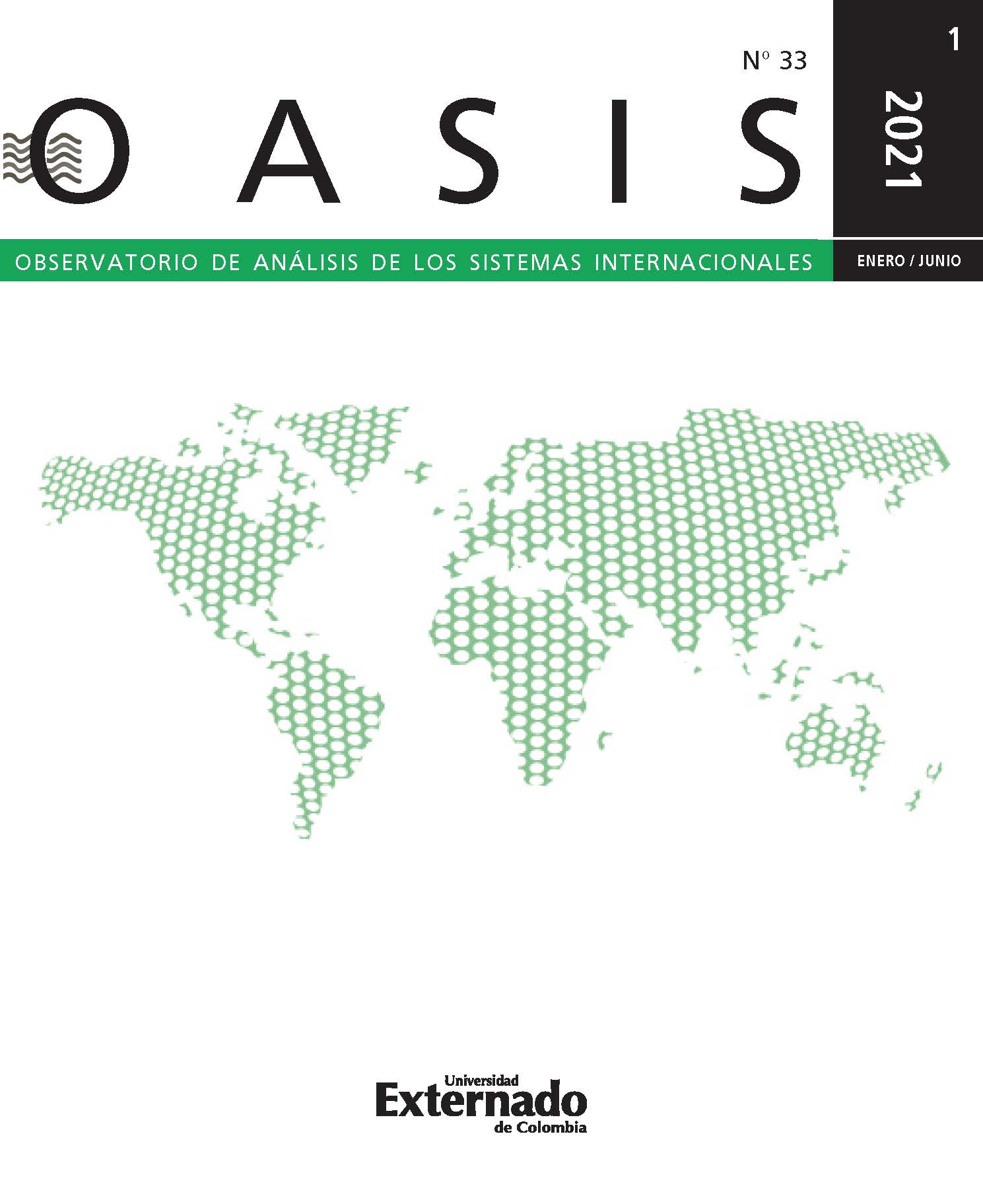Simulating conflict resolution dynamics and fostering negotiation skills
Simulating conflict resolution dynamics and fostering negotiation skills
Contenido principal del artículo
Resumen
El artículo analiza el uso de simulaciones como una herramienta de aprendizaje activo y explora su idoneidad en los estudios de Relaciones Internacionales (RR. II.), que involucran a diferentes poblaciones de estudiantes. Las experiencias de negociación anteriores se utilizan para describir Game of Peace, un modelo de negociación, desarrollado por el autor, para abarcar a los estudiantes en el papel de varias facciones involucradas en una guerra civil. Al evaluar los comentarios de los estudiantes, aquí se sostiene que las simulaciones son extremadamente funcionales para los cursos de RR. II., para mejorar las habilidades de aprendizaje, fomentar las habilidades y capacidades relacionales, y para llevar las teorías y conceptos a la vida real. El artículo consta de tres partes. En primer lugar, se evalúa la literatura más reciente sobre simulaciones para reflexionar sobre la idoneidad de las simulaciones; en segundo lugar, la experiencia del Game of Peace se presenta en sus principales pasos, roles y características de interacción. Por último, sus principales resultados se utilizan para evaluar su impacto pedagógico y prever más investigaciones.
Palabras clave
Descargas
Detalles del artículo
Referencias / Ver
Ayhan, K. J. (2019). Transferring Knowledge to Narrative Worlds: Applying Power Taxonomy to Science Fiction Films. International Studies Perspectives.
Asal, V.; Miller, I. & Willis, C. N. (2020). System, State, or Individual: Gaming Levels of Analysis in International Relations. International Studies Perspectives, 21 (1), 97-107.
Asal V. (2005). ‘Playing Games with International Relations. International Studies Perspectives 6: 359–373.
Ben-Yehuda, H. and Zohar, G. (2018). Fanaticism Through the Looking Glass of Simulations, Journal of Political Science Education, 14(2): 1-25.
Ben-Yehuda, H.; Levin-Banchik, L. & Naveh, C. (2015). World politics simulations in a global information age, Michigan: University of Michigan Press.
Brynen, R. (2010). (Ending) civil war in the classroom: A peacebuilding simulation. PS: Political Science & Politics, 43 (1), 145-149.
Blake E. L. and Starkey B. A. (2001), Simulation in international relations education, Simulation & Gaming, 32(4: 537-551.
Bridge, D., & Radford, S. (2014). Teaching diplomacy by other means: Using an outside-of-class simulation to teach international relations theory. International Studies Perspectives, 15 (4), 423-437.
Cusimano, M. (2000). Case Teaching Without Cases. In J. S. Lantis, L. M. Kuzma and J. Boehrer (edited), The New International Studies Classroom: Active Teaching, Active Learning, Boulder, CO: Lynne Rienner Publishers.
Fowler, M. R. (2009). Culture and negotiation: The pedagogical dispute regarding cross-cultural simulations. International Studies Perspectives, 10(3), 341-359.
Klabbers, J. H. (2009). The magic circle: Principles of gaming & simulation. Brill Sense.
Giovanello, S. P.; Kirk, J. A. & Kromer, M. K. (2013). Student perceptions of a role-playing simulation in an introductory international relations course. Journal of Political Science Education, 9(2), 197-208.
Irrera, D. (2016). The use of simulations as a teaching tool, www.e.ir-info, https://www.e-ir.info/2016/05/26/the-use-of-simulations-as-a-teaching-tool/
Lantis, J. S.; Kuzma, L. M. & Boehrer, J. (Eds.) (2000). The new international studies classroom: Active teaching, active learning. Boulder, CO: Lynne Rienner.
Lantis, J. S. (1998). Simulations and experiential learning in the international relations classroom. International Negotiation, 3(1), 39-57.
McIntosh, D. (2001). The uses and limits of the model United Nations in an international relations classroom. International Studies Perspectives, 2(3), 269-280.
Newmann, W. W. & Twigg, J. L. (2000). Active engagement of the intro IR student: A simulation approach. PS: Political Science & Politics, 33(4), 835-842.
Pepinsky T.B. (2005). From Agents to Outcomes: Simulation in International Relations, in European Journal of International Relations, 11(3): 367-394.
Raines, S. (2003). ‘The Potential Perils of Slack (not Pack) Pedagogy: A Response to J. Martin Rochester’s Remarks about Active Learning Strategies. International Studies Perspectives 4: 432–435.
Raymond, C. and Sorensen, K. (2008). The use of a Middle East crisis simulation in an international relations course. PS: Political Science & Politics 41.1: 179-182.
Raymond, C. & Usherwood, S. (2013). Assessment in simulations. Journal of Political Science Education, 9(2), 157-167.
Rothman, S. B. (2012). Developing and adapting simulations through six points of variance: An example of teaching applied game theory through international negotiations. International Studies Perspectives, 13(4), 437-457.
Shellman, S. and Turan, K. (2006). Do simulations enhance student learning? An empirical evaluation of an IR Simulation, Journal of Political Science Education 2(1): 1-14.
Simpson A., W. and Kaussler, B. (2009). IR Teaching Reloaded: Using Films and Simulations in the Teaching of International Relations, International Studies Perspectives, 10, 413–427.
Stoll, R. J. (2011). Civil Engineering: Does a Realist World Influence the Onset of Civil Wars? Simulation & Gaming, 42(6), 748-771.
Stover, W. J. (2005). Teaching and learning empathy: An interactive, online diplomatic simulation of Middle East conflict. Journal of Political Science Education, 1(2), 207-219.
Strand, J. R. & Rapkin, D. P. (2011). Weighted Voting in the United Nations Security Council: A Simulation. Simulation & Gaming, 42(6), 772-802.
Taylor, K. (2013). Simulations inside and outside the IR classroom: A comparative analysis. International Studies Perspectives, 14(2), 134-149.
Tessman, B. F. (2007). International relations in action: A world politics simulation. Boulder, CO: Lynne Rienner Publishers.
Torney-Purta, J. (1998). Evaluating programs designed to teach international content and negotiation skills. International Negotiation: A Journal of Theory and Practice, 3(1), 77-97.
Weir, K. & Baranowski, M. (2011). Simulating history to understand international politics. Simulation & Gaming, 42(4), 441-461.










